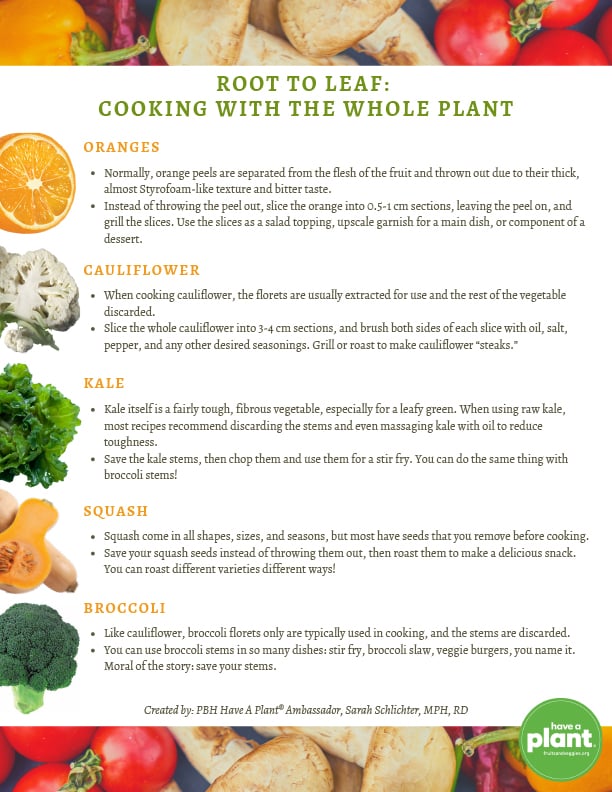
Root To Leaf: Cooking With The Whole Plant
When it comes to food, American families waste 76 Billion pounds each year. Not cool! Let’s use these tips to wave goodbye to food waste and do our part to create a better world.
Oranges
Normally, orange peels are separated from the flesh of the fruit and thrown out due to their thick, almost Styrofoam-like texture and bitter taste. Instead of throwing the peel out, slice the orange into 0.5-1 cm sections, leaving the peel on, and grill the slices. Use the slices as a salad topping, upscale garnish for a main dish, or component of a dessert.
Cauliflower
When cooking cauliflower, the florets are usually extracted for use and the rest of the vegetable discarded. Slice the whole cauliflower into 3-4 cm sections, and brush both sides of each slice with oil, salt, pepper, and any other desired seasonings. Grill or roast to make cauliflower “steaks.”
Kale
Kale itself is a fairly tough, fibrous vegetable, especially for a leafy green. When using raw kale, most recipes recommend discarding the stems and even massaging kale with oil to reduce toughness. Save the kale stems, then chop them and use them for a stir fry. You can do the same thing with broccoli stems!
Broccoli
Like cauliflower, broccoli florets only are typically used in cooking, and the stems are discarded. You can use broccoli stems in so many dishes: stir fry, broccoli slaw, veggie burgers, you name it. Moral of the story: save your stems.
Squash
Squash come in all shapes, sizes, and seasons, but most have seeds that you remove before cooking. Save your squash seeds instead of throwing them out, then roast them to make a delicious snack. You can roast different varieties different ways!



